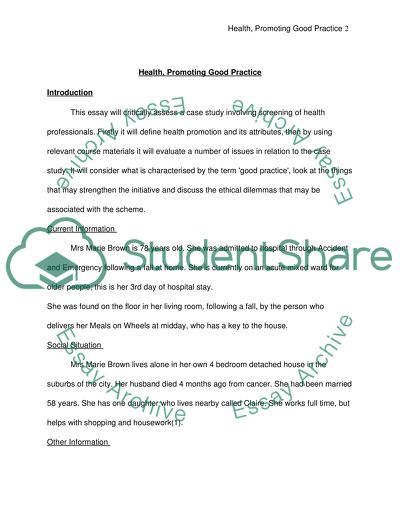Cite this document
(“Health, Promoting Good Practice Essay Example | Topics and Well Written Essays - 2500 words”, n.d.)
Retrieved from https://studentshare.org/miscellaneous/1524782-health-promoting-good-practice
Retrieved from https://studentshare.org/miscellaneous/1524782-health-promoting-good-practice
(Health, Promoting Good Practice Essay Example | Topics and Well Written Essays - 2500 Words)
https://studentshare.org/miscellaneous/1524782-health-promoting-good-practice.
https://studentshare.org/miscellaneous/1524782-health-promoting-good-practice.
“Health, Promoting Good Practice Essay Example | Topics and Well Written Essays - 2500 Words”, n.d. https://studentshare.org/miscellaneous/1524782-health-promoting-good-practice.


